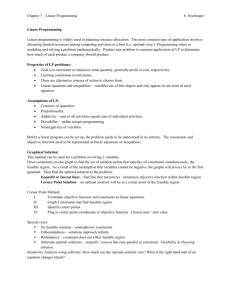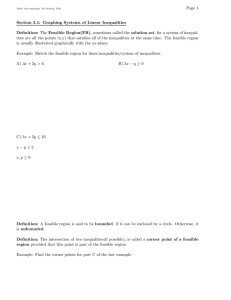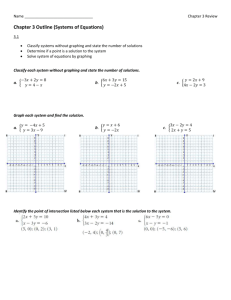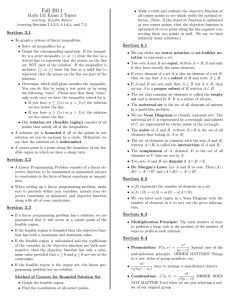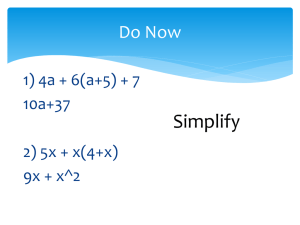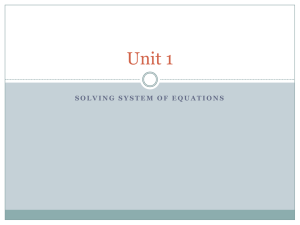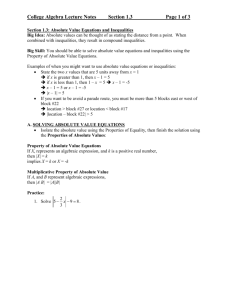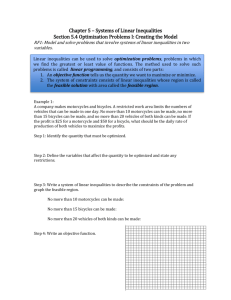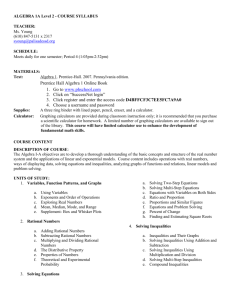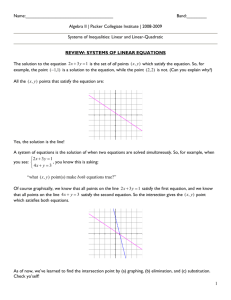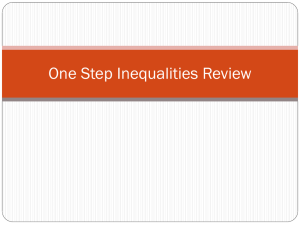Linear Programming: Features & Solving Strategies
advertisement
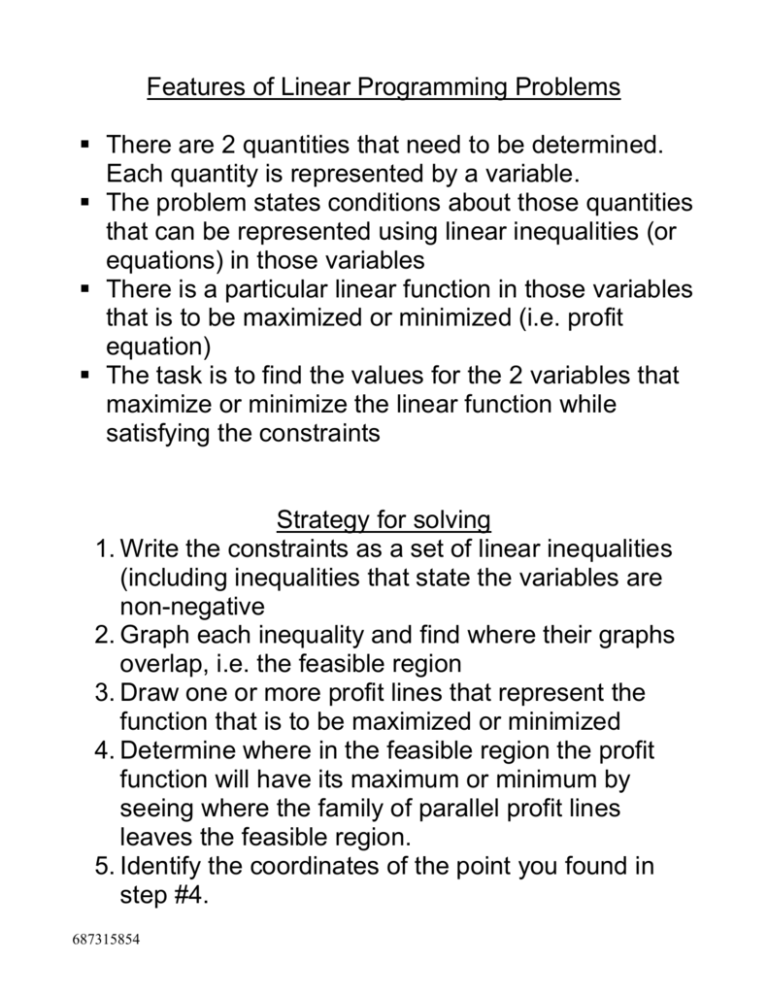
Features of Linear Programming Problems There are 2 quantities that need to be determined. Each quantity is represented by a variable. The problem states conditions about those quantities that can be represented using linear inequalities (or equations) in those variables There is a particular linear function in those variables that is to be maximized or minimized (i.e. profit equation) The task is to find the values for the 2 variables that maximize or minimize the linear function while satisfying the constraints Strategy for solving 1. Write the constraints as a set of linear inequalities (including inequalities that state the variables are non-negative 2. Graph each inequality and find where their graphs overlap, i.e. the feasible region 3. Draw one or more profit lines that represent the function that is to be maximized or minimized 4. Determine where in the feasible region the profit function will have its maximum or minimum by seeing where the family of parallel profit lines leaves the feasible region. 5. Identify the coordinates of the point you found in step #4. 687315854 Strategy for solving w/out graphing 1. Write the constraints as a set of linear inequalities (including inequalities that state the variables are non-negative 2. Find all points where boundary lines intersect by solving all possible pairs of linear equations corresponding to the constraints These are the intersection points or corner points 3. Write down the function being minimized or maximized 4. Evaluate this function at each of the intersection points found in step #2 and determine which gives the minimum or maximum value that is inside the feasible region 687315854 Strategy for n-variables 1. List the constraints, both equations and inequalities, including inequalities that state the variables are non-negative 2. Make a list of all combinations of constraints, n at a time, that includes every constraint equation. 3. For every combination, look for a common solution to the corresponding system of linear equations. If there is a unique solution, then this is a “potential” corner point. If there is no unique solution, then ignore the point. 4. Test all “potential” corner points to make sure they fit all the constraints. Those that do become “actual” corner points. 5. Evaluate the profit function at these “actual” corner points. 6. Identify the point that maximizes or minimizes your profit function. 687315854
